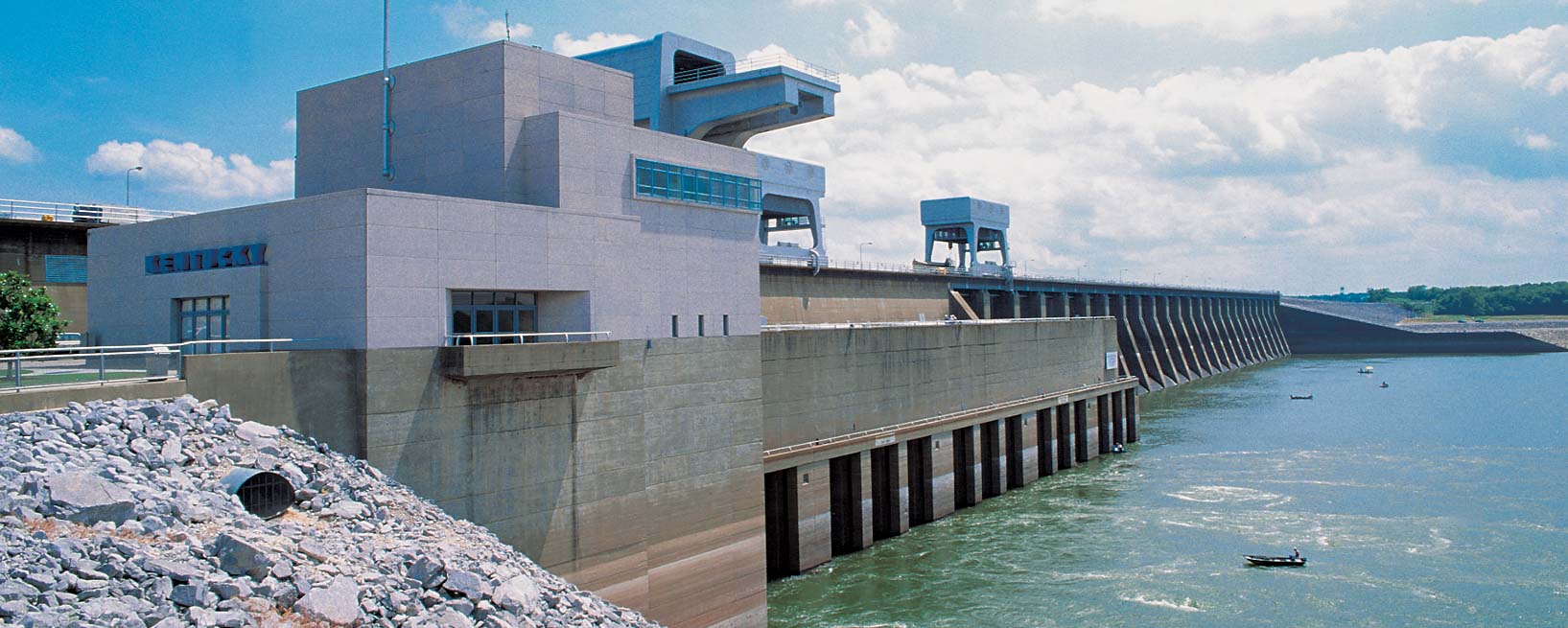
TVA’s Mightiest Work
On March 3, 1828, the steamboat, Atlas, having made it safely over the treacherous Muscle Shoals in north Alabama, arrived in Knoxville to great fanfare. It was the first steamboat to have traveled the entire length of the Tennessee River. However, one speaker at the event — Dr. J.G.M. Ramsey, a local physician, banker and well-known historian — objected to the arrival of the Atlas because it would open Tennessee to “outsiders,” which, according to him, “would bring about a subsequent deterioration of the east Tennessee region.” He wasn’t alone in his sentiment; the state had to pass a law against throwing rocks at steamboats.
Over a century later, a similar trip was taken, only this time people weren’t throwing rocks. They were reading newspaper headlines heralding “The Tennessee River Channel Completed.” In fact, the first modern tow to navigate the entire downstream length of the improved river arrived at Knoxville in February 1944. But it was not until April 1945, with the completion of Kentucky Lock and Dam and the dredging of the upstream end of Kentucky Reservoir, that full project depth of eleven feet was provided (9 feet plus 2 feet of overdepth — ample for vessels). Any sort of boat could now travel the entire 652-mile length of the Tennessee from Paducah, Kentucky, to Knoxville, Tennessee. One of TVA’s main objectives — providing for the navigation of the Tennessee River — was completed. It was a milestone in the history of TVA as well as the region.
A Monument to Man’s Will
When TVA was created in 1933, a major provision of the TVA Act was to provide navigation. Wilson and Hales Bar Dams and Locks, built by the U.S. War Department and the Chattanooga and Tennessee River Power Company, respectively, already spanned the Tennessee, providing limited navigation and flood control. But the Tennessee was far from tamed. TVA’s architects and engineers went to work right away to build our system of locks and dams on the main stem. They began with Wheeler and marched forward to Pickwick, Guntersville, Chickamauga, Watts Bar, Fort Loudoun and finally to the mighty Kentucky Lock and Dam that would make the navigation channel complete.
Work began on Kentucky Dam in July 1938. Three units were planned, but as work was getting well underway, World War II upset existing plans and schedules. By the summer of 1940, critical conditions in Europe directed attention to the war potential of the United States and to the threat of a serious power shortage. The War Production Board called on TVA to find ways to add power. The Kentucky project underwent a reappraisal and the Board authorized the installation of four generating units and within a year, the number was upped to five units. At the same time, the date for the start of the reservoir impoundment was advanced from summer 1945 to summer of 1944.
TVA met this aggressive schedule and the dam was ready to be dedicated by President Truman on October 10, 1945. In anticipation of the dedication, The Knoxville News-Sentinel published an article praising Kentucky Dam. Calling it “TVA’s mightiest work,” the paper went on to elaborate on the dam’s many attributes:
“A magnificent monument to man’s will over nature. By far the largest and most expansive of the 26 major dams in TVA’s entire system, Kentucky impounds over 6 million acre-feet of water.... Kentucky Lake is quite the daddy of all man-made lakes in the Southeast. Mark Twain could easily get lost on its 158,000 acres.... Kentucky Dam at long last opens a nine-foot navigable channel from Paducah to Knoxville — 650 miles of inland water transportation and traffic. And commerce on the Tennessee is increasing.... And great is the power produced at Kentucky! Electric power produce from the three 32,000 kilowatt generators now operating at the dam was a factor in the support of war industries in the Tennessee Valley.”
Third Busiest Waterway
Since TVA’s creation in 1933, Tennessee River freight traffic had been on the increase. At that time, with only part of the navigation channel available, river traffic measured 940,000 tons. With the completion of Kentucky Lock and Dam a whole new world opened up — literally. The Tennessee River waterway was now an integral part of the interconnected 12,000-mile National Inland Waterway System. Ports and terminals on the River were directly linked with those of 21 other states via the Inland Waterway and indirectly linked to the coastal and Great Lakes states and the rest of the world via the international ports of Chicago, New Orleans, and Mobile. The amount of freight moved on the river reflected this change. By 1945, over 2 million tons of cargo — commodities such as grains, coal, iron and steel, chemicals and petroleum — travelled over the Tennessee River. Over the past ten years, freight moving on the Tennessee River system has averaged 50.5 million tons per year, making it the third busiest waterway in the national inland system by traffic volume behind the Mississippi and Ohio Rivers.
The completion of Kentucky was truly a milestone. It helped the region transition from a war-time mentality back to peacetime and provided the tools for post-war economic growth. On this, its 75th year of producing power, Kentucky stands as a proud beacon of TVA’s past as well as shining a light on the opportunities of the future.